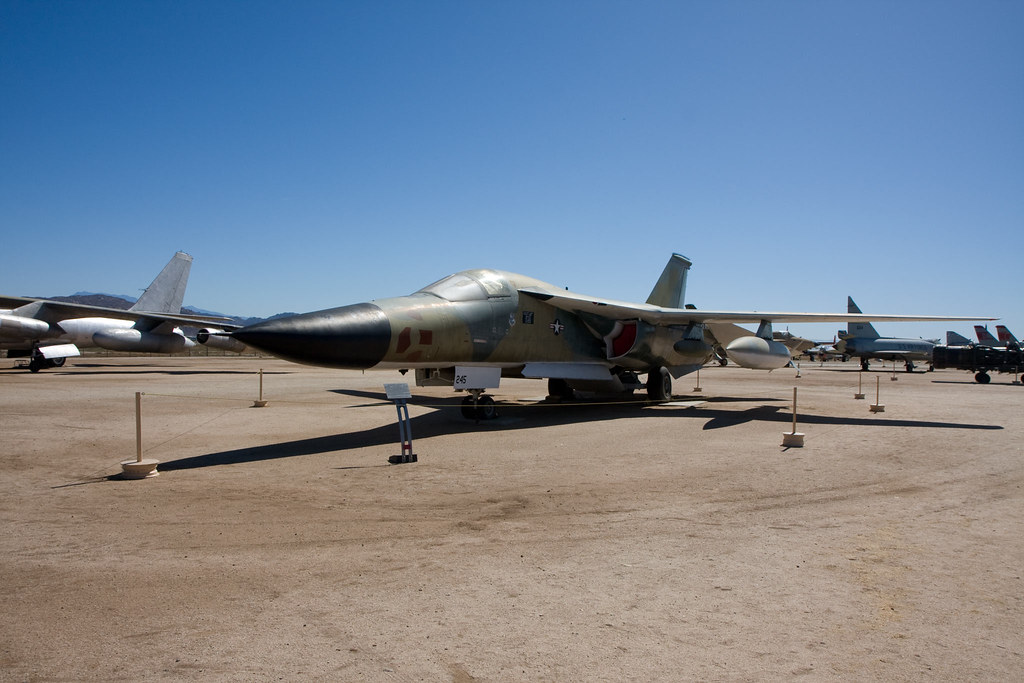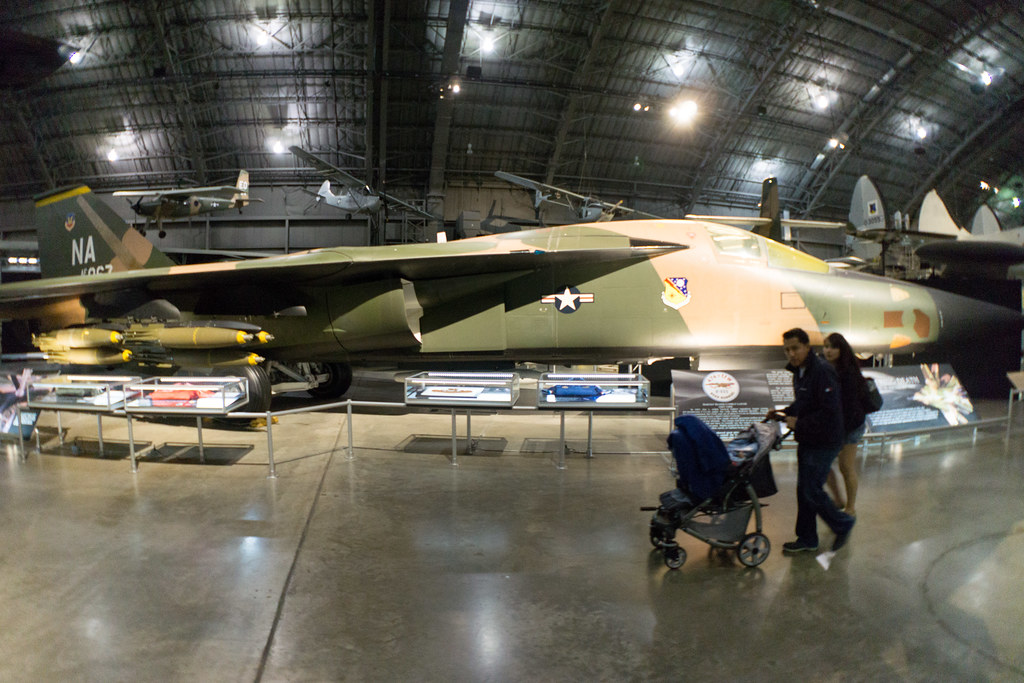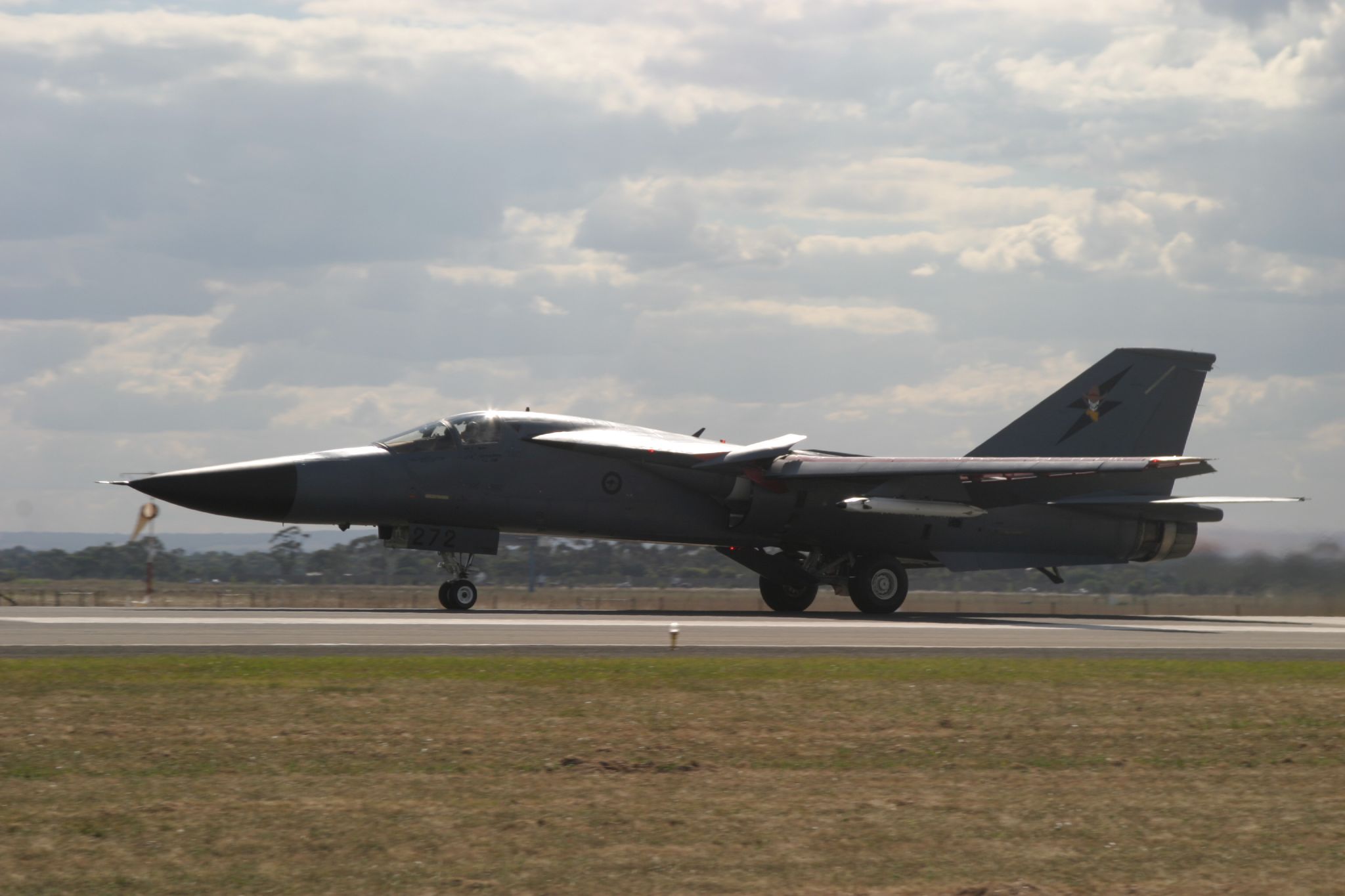
The F-111 Aardvark, a name synonymous with technological innovation and strategic prowess in military aviation history, operated as a supersonic, multirole aircraft defining an era of aerospace advancement.

From the Vietnam War to Operation Desert Storm, it etched its mark on both the U.S. Air Force and the Royal Australian Air Force (RAAF).

Conceived as the TFX (Tactical Fighter “X”), the F-111 broke new ground as the first production aircraft with variable sweep wings.

This feature, which allowed the wings to be moved back and forth in flight, enabled the aircraft to transition seamlessly from the maneuverability of straight-wing flight to the high-speed efficiency of swept-wing flight.

Designed in the 1960s, the Aardvark was an ambitious project aiming to serve both the U.S. Air Force and the Navy. However, the F-111B Navy variant was canceled due to its inability to meet carrier landing requirements, paving the way for the F-111A Air Force variant to claim its place in the skies.

The F-111’s suite of pioneering technologies included afterburners on turbofan engines and a terrain-following radar—innovations that have since become staples in modern fighter jets.

The Aardvark’s debut was marred by a tragic start, with unexplained crashes linked to a design flaw in the horizontal stabilizer. This hydraulic control-valve rod flaw forced the suspension of combat operations, but once resolved, the F-111 returned to action with a vengeance.

In combat, its capabilities shone through during intense operations such as Linebacker I and II, earning the moniker “Whispering Death” from the North Vietnamese.

The aircraft’s variable sweep wings, colloquially known as swing wings, further solidified its reputation as a versatile combatant. It could undertake low-level supersonic missions, and its long-range capabilities made it a formidable force to be reckoned with.

The F-111 had a significant global political presence, participating in Operation Desert Storm and striking against targets in Libya during Operation El Dorado Canyon.

Its role in these conflicts underscored the U.S.’s interventionist stance in global politics at the time. The aircraft’s impact was so profound that its engine sounds were included on the Golden Record, launched into space to represent human technological achievement.

Despite its success, the F-111 faced an undignified end. The discovery of asbestos in its construction led to the burial of many airframes. While a few were preserved in museums, the majority faced a fate beneath the soil—an ignominious conclusion for a machine that once soared through the skies as a symbol of power and progress.

In the cockpit, the F-111 was crewed by a pilot and a weapons system officer who sat side-by-side. Notably, the aircraft featured an emergency escape pod, capable of ejecting the entire cockpit module, ensuring crew safety in dire situations. The Aardvark could operate from tree-top level to altitudes above 60,000 feet, and its radar system permitted flight in all weather conditions, hugging the Earth’s contours for stealthy incursions.

The F-111 was ultimately retired from the USAF in 1996, and from RAAF service in 2010, replaced by newer models such as the F-15E and the B-1B in the U.S., and the F/A-18 and the F-35 in Australia.

Its legacy, however, endures as a testament to the golden age of fighter design and the foresight to integrate technology that would become the benchmark for future generations of aircraft. As the Aardvark’s story closes, its influence continues to reverberate in the echoes of jets that trace its lineage in the skies.
Relevant articles:
– F-111 Aardvark: The Warplane Built to Strike Just About Anything, The National Interest
– F-111 Aardvark: The Warplane Built to Strike Just About Anything, The National Interest
– F-111 Aardvark: The Flying Pig, Imperial War Museums
– Aircraft: F-111 Aardvark, U.S. Space & Rocket Center

